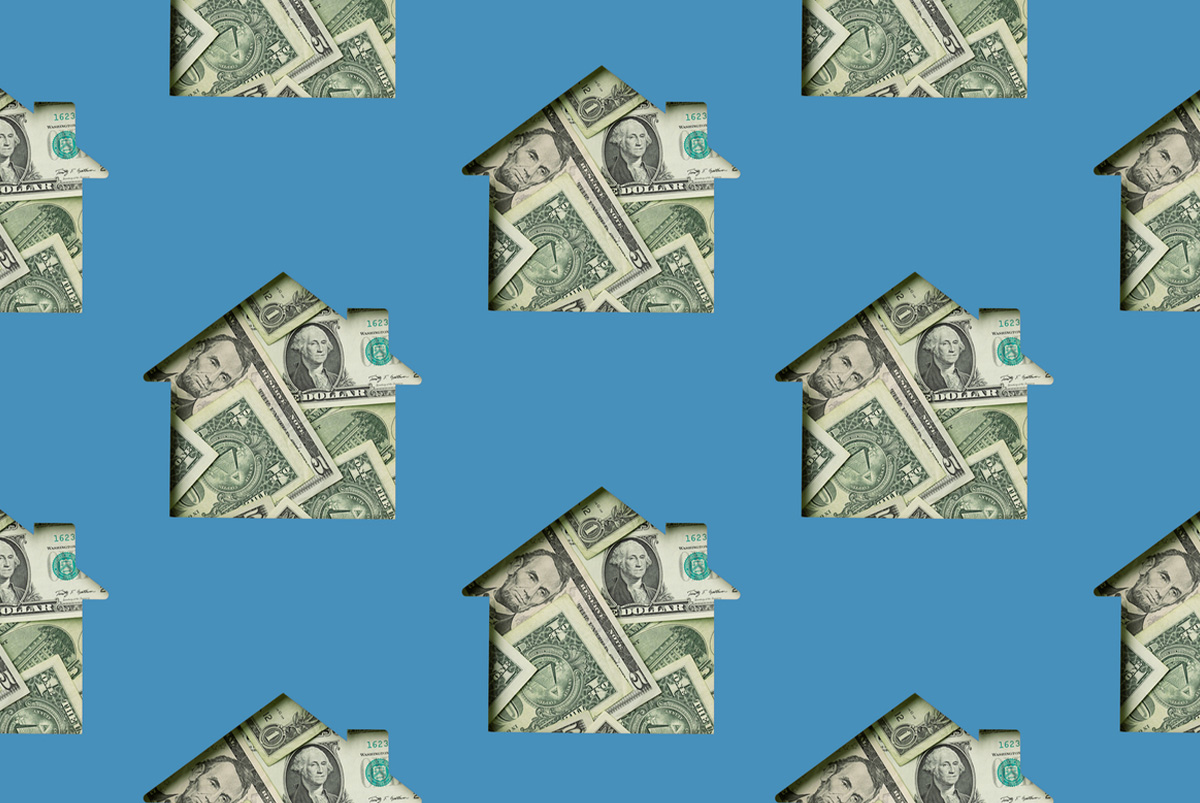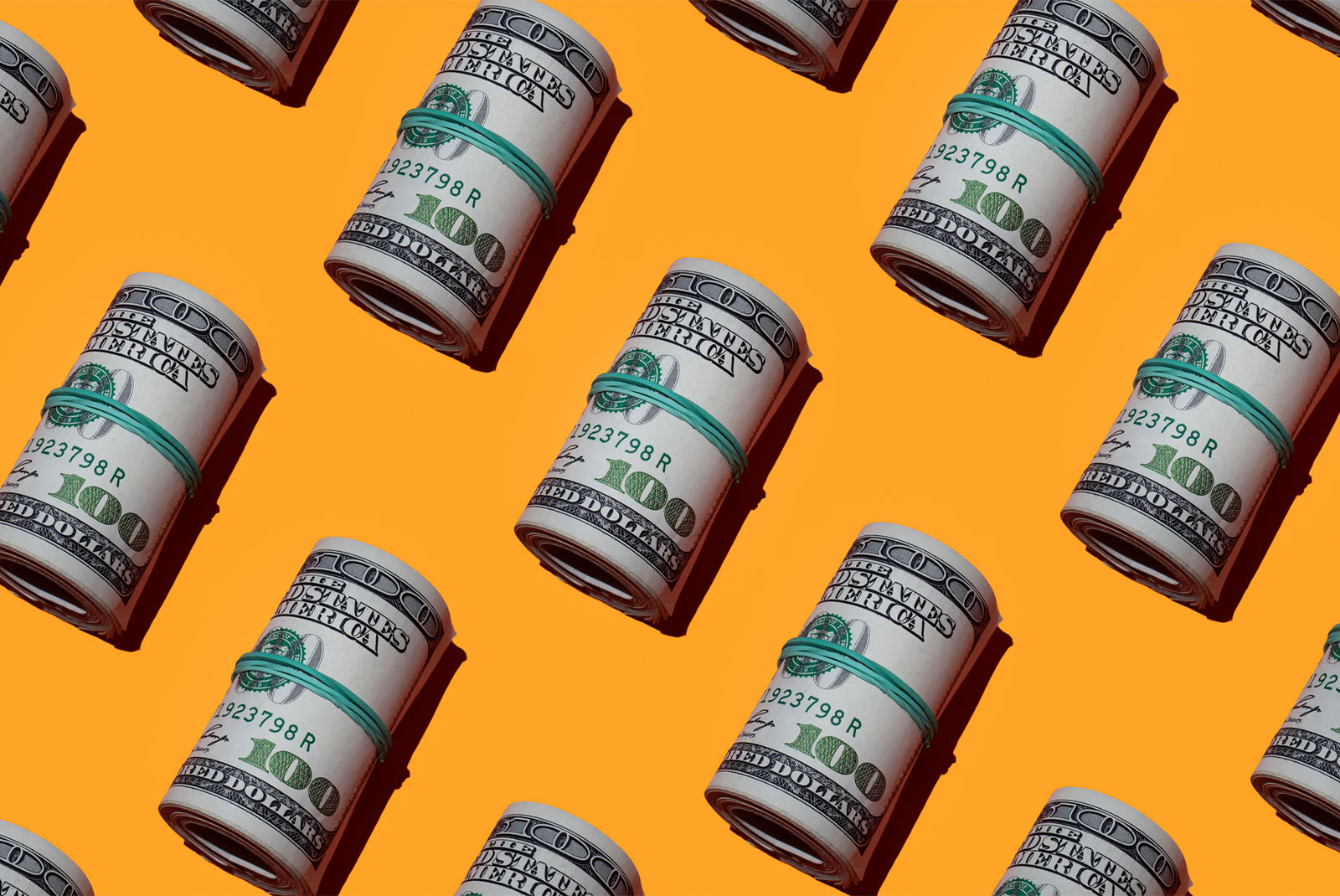Ready To Buy a Home?
Get Approved to Buy a Home
Rocket Mortgage® lets you get to house hunting sooner.
Thinking of buying a home? You may be wondering how much money you’ll need to save up before you can confidently start making offers. And, depending on who you ask, you’ll probably get a bunch of different answers.
We’ve put together this helpful guide to answer your home buying questions, including how much you’ll need to save and how to save or raise the money you’ll need to buy a home.
How Much Money Will You Need To Buy a Home?
How much money you’ll need will depend on the price, size and location of the house you’re interested in and your financial situation.
To get you started, here are some key things you’ll want to save money for:
Down payment
Traditionally, many experts recommend making a down payment equal to 20% or more of the home sale price. But times – and recommendations – have changed. Today, you can get a mortgage with as little as 3% down. In fact, if you qualify for certain loans, you won’t have to put a cent down.
- Conventional loans: You can put 3% down with Fannie Mae HomeReady® and Freddie Mac Home Possible® loan programs. These programs are geared toward first-time home buyers with credit scores of 620 or higher.[1][2]
- Federal Housing Administration (FHA) loans: You can put 3.5% down with FHA loans. Anyone can apply, but these loans are usually aimed at first-time home buyers and home buyers with past credit issues. To qualify for a 3.5% down payment, you’ll need a credit score of 580 or higher.[3]
- U.S. Department of Veterans Affairs (VA) loans: There is no down payment requirement or minimum credit score requirement from the VA.[4] However, lenders will have their own requirements, and typically prefer a minimum credit score of 580. VA loans are only available to qualifying service members, veterans and surviving spouses.
- U.S. Department of Agriculture (USDA) loans: There is no down payment with these loans. USDA loans are available for buyers who are interested in buying in designated rural areas. There are some limits based on your income and area home values. While there’s no minimum credit score requirement, lenders typically prefer that borrowers have a score of 640 or higher.[5]
Low- or zero-down payment loans can help make your upfront costs a lot easier to afford, but they come with back-end costs.
- Conventional loans: Borrowers who don’t make a 20% down payment often pay for private mortgage insurance (PMI). This monthly fee usually costs between 0.2% – 2% of the loan amount. You pay PMI until the amount you owe is less than 80% of the home’s value.[6]
- FHA loans: You have to pay mortgage insurance premiums (MIPs) with FHA loans. There’s an upfront premium due at closing that amounts to 1.75% of the loan amount. There’s also an annual premium that you’ll pay every month; it’s around 0.45% – 1.05% of your loan. Depending on the loan, you’ll have to make payments for 11 years or more.[7]
- VA loans: VA loans require an upfront funding fee that amounts to 1.4% – 3.6% of the loan value.[8]
- USDA loans: USDA loans come with an upfront guarantee fee that’s 1% of the loan value and an annual fee that’s 0.35% of the loan value.[9]
Pro tip: Upfront fees can be folded into your loan so you don’t have to pay them at closing, but keep in mind that folding in fees will increase your monthly mortgage payment. Remember that as you’re budgeting for your future home.
Closing costs
Closing costs are the expenses you pay on top of the home sale price to cover the processing of the loan and the transfer of the home. Closing costs can include a range of expenses, including:
- The origination fee charged by the lender
- Title inspections
- Prepayment for homeowners insurance
- Upfront payment of property taxes
- Upfront fees required for government-backed loans
- Money required to cover home inspections and appraisals
As a rule, closing costs can average between 3% – 6% of the home’s purchase price.
The good news is that you may not need to pay all of your closing costs at closing. Some costs can be folded into the loan.
If you’re concerned about how much your closing costs might run you, look at your Loan Estimate form. It’s a standardized, three-page form your lender is required to send you and lays out your closing costs in detail, including what you need to pay upfront and what can be folded into your loan.
Cash reserves
Some lenders may want to see that you have enough saved to cover at least 2 months’ worth of mortgage payments, which are made up of your mortgage principal and interest, property taxes and insurance (PITI). If your anticipated monthly mortgage payment is $1,300, you’ll need to show that you have at least $2,600 stashed in a bank account.
Cash reserves aren’t part of your down payment. It’s extra cash you can get your hands on easily enough in case you need it to cover your monthly mortgage payment.
Moving expenses
If you’re moving into a new home, you’ll need to cover moving expenses. How much you’ll pay to move will depend on how far you’re moving and how much stuff you’ve got. You should budget to pay between $1,000 – $6,000 for moving expenses. If it’s an interstate move, the cost will likely be a lot higher.
There are other possible expenses you’ll want to add to your home buying budget. Maybe you want to make some home improvements, like painting, getting new furniture or making renovations or repairs. You can put these expenses on your credit card, but you’ll still need to figure out how to pay down the credit card debt.
How Can You Start Saving To Buy a House?
So, how much should you save? To buy a house, you could theoretically make a down payment as low as 2% – 3%. But the truth is, you’ll probably need more than that. Plan to save around 5% – 10% of the home’s purchase price.
Now, let’s say the home your heart is set on is selling for $250,000 and your costs look like this:
- Down payment: 3%
- Closing costs: 4%
- Other expenses: 3%
That adds up to 10% of the loan value – or $25,000. That’s all money spent before you even make your first mortgage payment.
So, here are a few ways to save for your future home:
Create a savings plan
When it comes to buying a home, one of your most valuable assets will be time. The longer you can save, the more manageable it will be to collect the money you need to buy a home.
If you wanted to save up that $25,000 during a specific number of years, this is how much you’d need to set aside each month:
- In 1 year: $2,083/month
- In 3 years: $694/month
- In 5 years: $417/month
- In 10 years: $208/month
- In 15 years: $104/month
Depositing your money into an interest-bearing account can help, but with interest rates at record lows right now, you may not see much of a return from savings accounts or certificates of deposit (CDs), especially if you’re saving for the short term.
When you’re ready to start saving, the first step is to create a budget.
Knowing what you’re earning – and where you’re spending what you’re earning – can help you make decisions about what expenses you can cut, and it can help you figure out how to make the most from your current income.
Improve your creditworthiness
While you’re saving money, you can also work on improving your creditworthiness.
Yes, improving your credit won’t help you save the dollars you’ll need to buy the home, but it can help you look more attractive to lenders, which could lead to better mortgage terms that save you money in the long run!
To start your credit journey, look at your:
- Credit score: Your credit score is a number that ranges from 300 – 850. It’s based on information drawn from the three major credit bureaus: TransUnion®, Equifax® and Experian™. The higher your score, the better terms you’ll qualify for.
- Debt-to-income (DTI) ratio: This is the percent of gross monthly income you use to cover recurring, monthly debt payments and fixed expenses, like housing and utilities. While lenders prefer a DTI of 43% or lower, you may qualify for a mortgage with a DTI as high as 50%.[10]
- Employment history: Lenders want to know that you make enough money to comfortably afford your mortgage payments. Lenders will typically ask for 2 years of work/employment history. Because a steady stream of predictable income is important to lenders, you may want to wait until your loan is approved before changing careers or starting a new business.
Ask your family for a gift
Setting aside money every month is a tried-and-true way to save, but we’ve all experienced sticker shock at the supermarket and many of us are dealing with student loan payments and credit card debt. Saving money is rarely as easy as it sounds.
Sometimes, asking a family member for help can make good financial sense.
The IRS allows people to make annual tax-free gifts of $15,000.[11] If you’re planning on asking family to help, keep in mind that you can get a $15,000 gift from more than one family member.
If you asked your parent(s) (biological and adoptive both count), you could get $15,000 from each for a total of $30,000. If you’re married or have a legal partner, your parent(s) could gift your spouse or partner another $30,000 for a total of $60,000.
If your family member wants to give more, well, that’s great! But there may be tax implications for the future. Also, it must be a gift. If your family member reports the money as a gift and then asks you to pay them back, it could be considered fraud.
Look for down payment assistance programs
If you’re taking advantage of an FHA loan or the HomeReady® or Home Possible® programs, you can also take advantage of down payment assistance, including:
- Contributions from employers and unions
- Gifts and donations from charitable organizations
- Grants
- Forgivable loans
- Deferred-payment loans
- Fannie Mae Community Seconds® and Freddie Mac Affordable Seconds® programs
Ask about seller concessions
If you’re buying a home in a buyer’s market (hint: the supply of homes exceeds demand), think about asking the seller to make some concessions.
Seller concessions are closing costs a seller agrees to cover. Sellers are often motivated to pay some closing costs if it speeds up selling the home or allows the buyer to make a larger offer.
There are restrictions on concessions, and some sellers may reject your offer. Talk to your real estate agent before you ask for any concessions.
Saving To Buy a Home? Don’t Do It Alone
Saving to buy a home can be challenging – but it isn’t impossible. While you’re responsible for getting the money you’ll need to make the down payment and pay your closing costs and other expenses, you don’t have to do it all by yourself.
Talk to your real estate agent, financial advisor, friends and family members. Let them guide and support you – financially or otherwise – while you figure out how much you’ll need to save and which saving strategies work best for your budget.
Sometimes, it takes a village to buy a home.
The Short Version
- You can buy a home paying down 2% – 3% of the home’s purchase price, but you should be ready to save at least 5% – 10%
- When it comes to saving money to buy a home, set a time frame and commit to saving a fixed amount each month
- You may be able to get the money you need from family members or by taking advantage of down payment assistance programs
Fannie Mae. “HomeReady Mortgage.” Retrieved November 2021 from https://singlefamily.fanniemae.com/originating-underwriting/mortgage-products/homeready-mortgage
Freddie Mac. “Home Possible®.” Retrieved November 2021 from https://sf.freddiemac.com/working-with-us/origination-underwriting/mortgage-products/home-possible
Federal Deposit Insurance Corporation. “203(b) Mortgage Insurance Program.” Retrieved November 2021 from https://www.fdic.gov/consumers/community/mortgagelending/guide/part-1-docs/203b-mortgage-insurance-program.pdf
U.S. Department of Veterans Affairs. “VA Guaranteed Loan.” Retrieved November 2021 from https://www.benefits.va.gov/BENEFITS/factsheets/homeloans/VA_Guaranteed_Home_Loans.pdf
USDA Rural Development. “Single Family Home Loan Guarantees.” Retrieved November 2021 from https://www.rd.usda.gov/sites/default/files/fact-sheet/508_RD_FS_RHS_SFHGLP.pdf
Experian™. “How Much Does Private Mortgage Insurance (PMI) Cost?” Retrieved November 2021 from https://www.experian.com/blogs/ask-experian/how-much-does-private-mortgage-insurance-pmi-cost/
U.S. Department of Housing and Urban Development. “APPENDIX 1.0 – MORTGAGE INSURANCE PREMIUMS.” Retrieved November 2021 from https://www.hud.gov/sites/documents/15-01MLATCH.PDF
U.S. Department of Veterans Affairs. “VA funding fee and loan closing costs.” Retrieved November 2021 from https://www.va.gov/housing-assistance/home-loans/funding-fee-and-closing-costs/
USDA Rural Development. “USDA Rural Development Reducing Fees Make Home Loans More Affordable.” Retrieved November 2021 from https://www.rd.usda.gov/newsroom/news-release/usda-rural-development-reducing-fees-make-home-loans-more-affordable
Fannie Mae. “Selling Guide – B3-6-02, Debt-to-Income Ratios (02/05/2020).” Retrieved November 2021 from https://selling-guide.fanniemae.com/Selling-Guide/Origination-thru-Closing/Subpart-B3-Underwriting-Borrowers/Chapter-B3-6-Liability-Assessment/1032992131/B3-6-02-Debt-to-Income-Ratios-02-05-2020.htm#DTI.20Ratios
Internal Revenue Service. “What’s New – Estate and Gift Tax.” Retrieved November 2021 from https://www.irs.gov/businesses/small-businesses-self-employed/whats-new-estate-and-gift-tax




